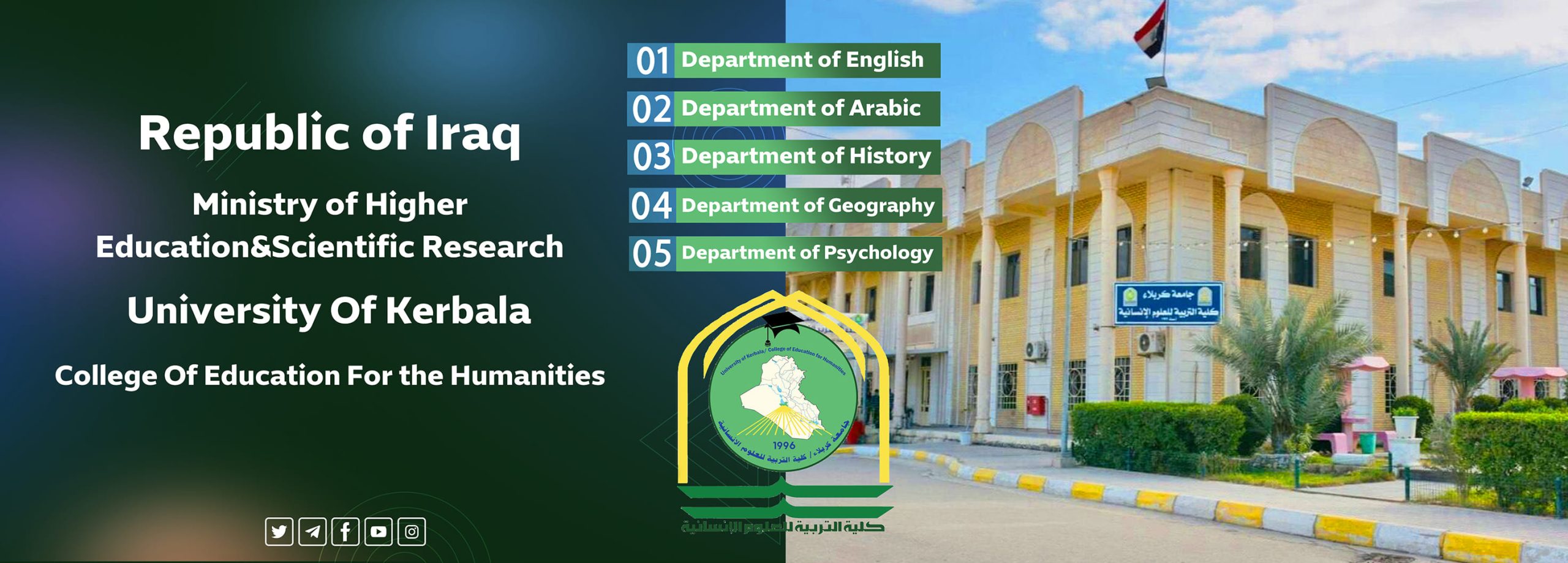
All praise is due to God, creator of the creation, granting good, praise suits His dignity as he must be praised, Prayer and peace be upon our master and prophet Mohammed and his progeny, the light of right guidance whom God removed all impurity from them and to make them completely pure.
The current research is established as an attempt to study the poet’s collection or a well-known figure who was one of the twelfth AD. Century figures. The current study is limited on the linguistic level for I am interested to be one of those who study languages in depth. However, I was busy with the studies that cared about the linguistic level especially the studies that mixed literature with linguistics. It is familiar that language application fields is literature particularly poetry. Therefore, my simple reading supported me to have a master study that combines linguistics and literature; as a result, I entitled me” Collection of Feraj Allah Al Huwaizi Al Ha’iri ( Died 1035 H.): A Linguistic Study ” to write about when the supervisor suggested studying his collection after assurance that it has never been tackled before, as well, it was verified recently by Dr. Mohammed Abdul Resoul Jasim Al Sa’di. Thus, after relying on Allah and consulting my supervisor Dr. Alya’ Nasrat, I interestingly decided to study it linguistically treating its linguistic features and limiting its characteristics according to the linguistic level.
The study adopted the descriptive analytical method which is based on investigation, then, choosing the samples that’s why the study was interested in analyzing the phonological and morphological constructions, stylistic constructions, and the semantic aspects according to the fourth levels: the phonological, morphological, stylistic, syntactic, and the semantic.
Nature of the study and its organization required to be in four chapters based on these levels, preceded by introduction and preface and followed by the research findings and results, it ended with a list of references and bibliographies.
The preface mentioned a brief idea about the poet’s name, origin, life, growth, writings, masters, and death.
The first chapter was about the phonological level, it has two sections. The first section discussed assimilation, and the second section discussed vowel and apposition.
The second chapter was about the morphological level, it has three sections. The first section displayed verbs constructions, the second displayed infinitive constructions, while the third was about derivative constructions (present participle, past participle, exaggeration form, semi verb adjective, superlative noun, and instrument name).
The third chapter tackled the grammatical level; it contained three sections. The first section was about the interrogative style. The second section was about negation form, while the third section was about various forms ( vocative, imperative, emphasis, and condition).
Finally, the fourth chapter represented the semantic level, it has two sections. The first section was about the semantic contrast while the second discussed synonyms.
The current study relied on the collection Feraj Allah Al Huwaizi Al Ha’iri, one of the twelfth A.D. , where I couldn’t find this collection independently printed, rather, I found an enhanced periodical journal/ Kerbala heritage center, sixth year, six volume/ second issue ( 20) blessed Ramadan Month 1440/ June/ 2019 A.D.
The most important results were the following:
Based on my study to the collection, I found that the poet highly used assimilation in his verse while vowel took a wide area including all its types and study from the phonological aspect which differs from his study from the morphological aspect. The apposition was clear and dominant, where many types of vowel and apposition were mentioned in the collection. However, what I mentioned was only for citation. Based on my study for the morphological aspect of the collection. I discovered that the poet has organized his verse according to the known morphological constructions in books of morphology. Thus, the study revealed the verbs constructions and derivative constructions. Based on my study to the grammatical level, I stated that the poet used the grammatical style which were clear through the devices he used. So, the most prominent style that emerged in his verse were interrogative style, condition, emphasis, vocative, and imperative . I took samples and irregularities what was prominent in the collection. The study revealed the phenomenon of synonym and semantic opposite on the semantic level where the poet used the opposite expressions ( the linguistic and the contextual) to show the controversies and differences in the society to emphasized the meaning
































































